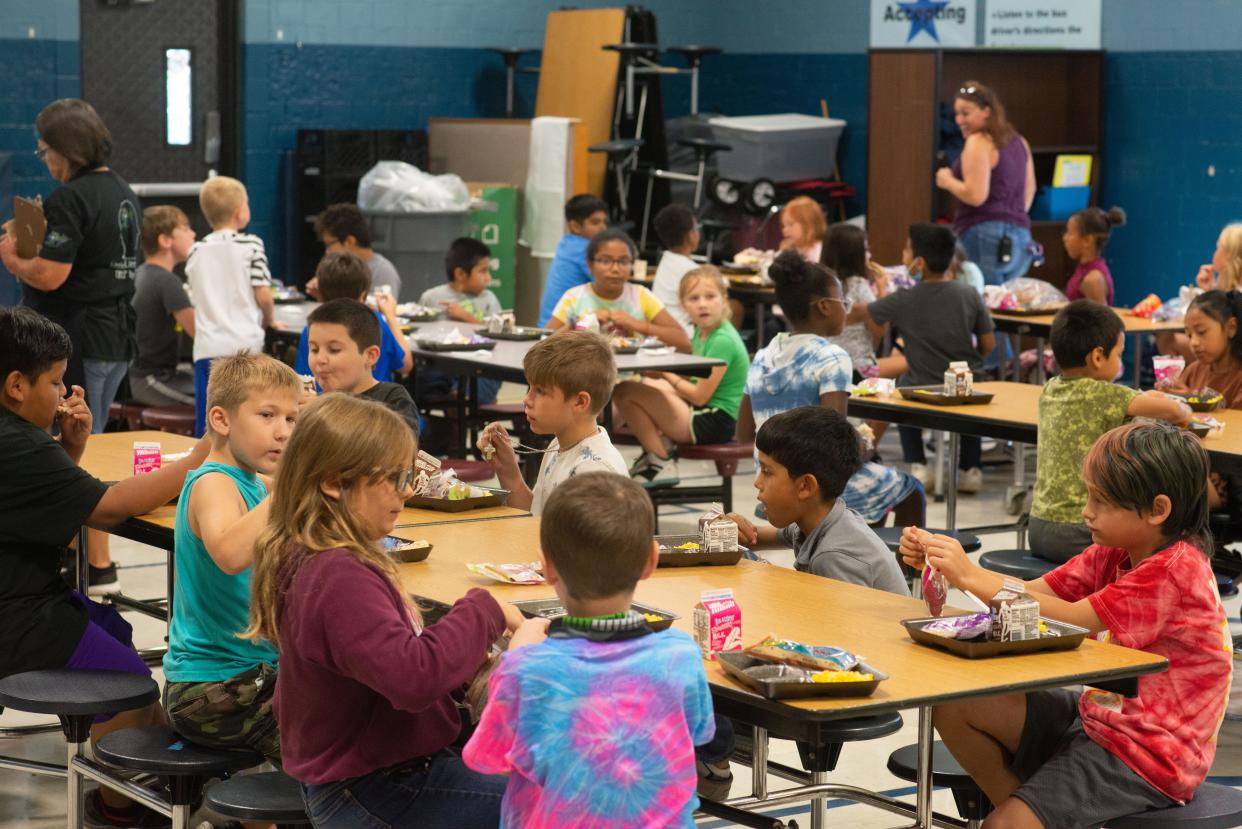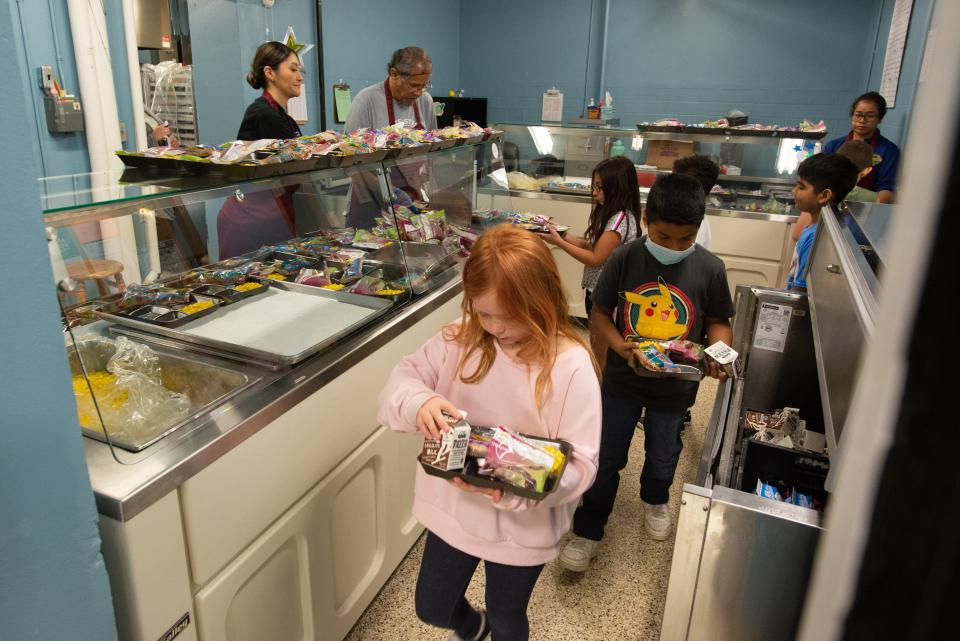Here's why every Topeka USD 501 student will have free school lunches, starting this fall

Topeka USD 501 will become the first district in Kansas to offer free school lunches to each of its students, starting this fall, district leaders announced Thursday.
The monumental offering is made possible by the Community Eligibility Provision, an option through the U.S. Department of Agriculture’s free and reduced-price meal program that allows districts to classify certain buildings as wholly eligible for free and reduced-price lunch once they meet certain percentages of low-income students.
More than half of Topeka USD 501’s schools and meal service sites were already classified as CEP schools this year. But following nutrition program workers’ hard work, the district was able to classify all 28 of its sites as CEP schools for next school year. Officials at the Kansas State Department of Education confirmed that Topeka will be the first Kansas district to reach that distinction.
Deputy superintendent of operations Larry Robbins was more straightforward in telling the school board the significance of that accomplishment Thursday: Next year, all students in Topeka USD 501 buildings will eat free.
“For the schools that were not CEP schools this year, we still have an outstanding debt to collect that is just under $81,000,” Robbins said, “so just think of the positive that means for all of those parents who had to dig in their purses and their wallets to pay for meals for their students. They won’t have to do that, beginning next year.”
Nicole Jahnke, general director of child nutrition services for the district, told The Capital-Journal that the district was able to finally meet CEP eligibility for all of its schools after her staff worked especially hard to find any lingering families who would otherwise qualify for free lunch but hadn’t yet applied.
The district also took advantage of Kansas’ participation in a pilot program that allows families to use Medicaid participation as an alternative way to qualify for free lunch.
No more lunchroom inequity

Out of a district-wide student count of just under 13,000 students, the district usually serves about 8,500 lunches and 4,000 breakfasts, Jahnke said.
But she imagines those counts will jump, once all students have the option to eat for free. Schools across Kansas and the nation saw a similar phenomenon during COVID, when Congress had funded free meals across the board. Without any stigma that “only poor kids eat free school meals,” students from across all socioeconomic classes partook in free meals, Jahnke said, and any “lunchroom inequity” was gone.
More: Gov. Laura Kelly adds to growing pressure on Congress to make free school lunch permanent
After that pandemic program ended, many states and individual districts began to more seriously question how to accomplish universally free meals on their own.
“Everybody will be the same,” Jahnke said. "It’s going to benefit kids and families so much, and many might not even recognize this until they realize they’re keeping more income and their kids are eating healthy meals.”
Breakfasts and lunches this year, although relatively cheap at about $1.70 and $2.70 respectively, can still be a burden when multiplied by 180 days of schools and potentially multiple students in a family, Jahnke said. Without that burden, though, families are freed up to spend on other vital expenses.
The other benefit is that once qualified for CEP status, the district’s buildings maintain that status for the next four years. Jahnke said she imagines other Kansas school districts with high percentages of low-income students might look to USD 501’s experiences and potentially make similar efforts to reach 100% CEP status.
More: Sorghum flour and aronia berries? Student teams use Kansas ingredients in recipe challenge
USD 501 families will likely still be asked to fill out free- and reduced-price lunch applications ahead of the 2023-24 school year, as the district uses that data as a proxy for families’ household income in applying for and qualifying for state aid and grants.
On the other hand, USD 501 will also save money on cashiering and lunch account management, allowing the child nutrition staff to focus their efforts on other more worthwhile efforts.
The bottom line though?
“All kids will have access to healthy meals, at absolutely no charge,” Jahnke said.
Rafael Garcia is an education reporter for the Topeka Capital-Journal. He can be reached at rgarcia@cjonline.com or by phone at 785-289-5325. Follow him on Twitter at @byRafaelGarcia.
This article originally appeared on Topeka Capital-Journal: Topeka USD 501 to offer universal free school lunch starting 2023-24

